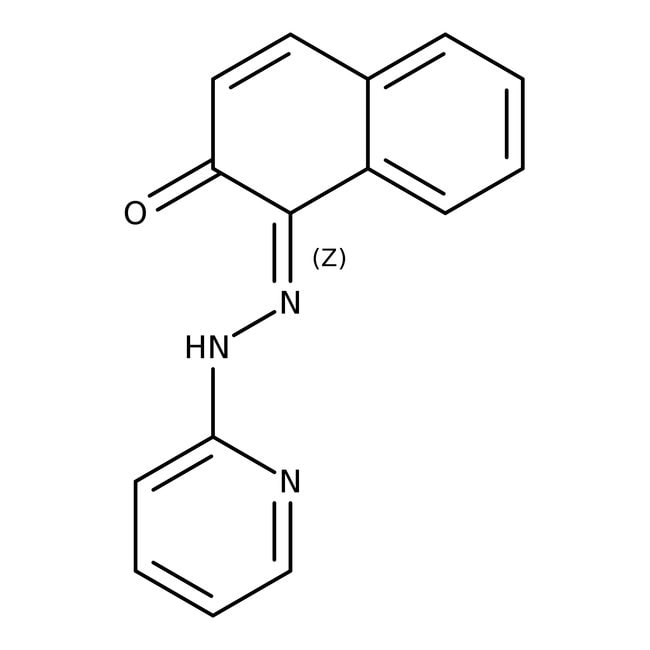Search Thermo Fisher Scientific
1-(2-Pyridyllazo)-2-naphthol, 98 %, Thermo Scientific Chemicals



1-(2-Pyridyllazo)-2-naphthol, 98 %, Thermo Scientific Chemicals
Chemikalien-Kennzeichnungen
Spezifikationen
Beschreibung
This Thermo Scientific Chemicals brand product was originally part of the Alfa Aesar product portfolio. Some documentation and label information may refer to the legacy brand. The original Alfa Aesar product / item code or SKU reference has not changed as a part of the brand transition to Thermo Scientific Chemicals.
1-(2-Pyridyllazo)-2-Naphthol wird häufig als Indikator für die Complexometrie verwendet. Es wird als Reagenz für die Extraktion und spektrophotometrische Bestimmung (für die kolorimetrische Analyse) vieler Übergangsmetallelemente wie Arsen, Chrom, Kobalt, Kupfer, Cadmium, Mangan, Zink und Zirkonium verwendet. Es wird auch für die Analyse von Uran und Thorium in Lösungen verwendet.
Löslichkeit
Unlöslich in Wasser.
Hinweise
Nicht kompatibel mit starken Basen und starken Oxidationsmitteln.
Abbildungen
Dokumente und Downloads
Zertifikate
Häufig gestellte Fragen (FAQ)
Zitierungen und Referenzen
Sicherheit und Handhabung
Classification of the substance or mixture
CLP classification - Regulation(EC) No 1272/2008
Label Elements
Signal Word
Warning
Hazard Statements
H315 - Causes skin irritation
H319 - Causes serious eye irritation
H335 - May cause respiratory irritation
Precautionary Statements
P261 - Avoid breathing dust/fume/gas/mist/vapors/spray
P280 - Wear protective gloves/protective clothing/eye protection/face protection
P302 + P352 - IF ON SKIN: Wash with plenty of soap and water
P305 + P351 + P338 - IF IN EYES: Rinse cautiously with water for several minutes. Remove contact lenses, if present and easy to do. Continue rinsing